The process of illustrating Frida Kahlo
Our fabulous Membership Assistant Marianna Madriz is a wealth of AOI knowledge, bringing a ray of sunshine to the office and supporting members week by week. As well as guiding the smooth running of events such as portfolio consultations and panel talks (and our occasional party), she also skilfully balances her workload as a flourishing freelance Illustrator.
We admire Marianna’s devotion to the industry. Aside from working on a variety of editorial projects and taking part in the UK small press scene, she recently got tasked with illustrating the famous Mexican artist Frida Kahlo for the brand new series of biographies Little Guides to Great Lives. Written by Isabel Thomas and published by Laurence King Publishing, it’s arrived just in time for the highly anticipated Frida Kahlo: Making Herself Up exhibition at the V&A.
Join us as we celebrate the launch of this colourful new title and go behind the scenes!
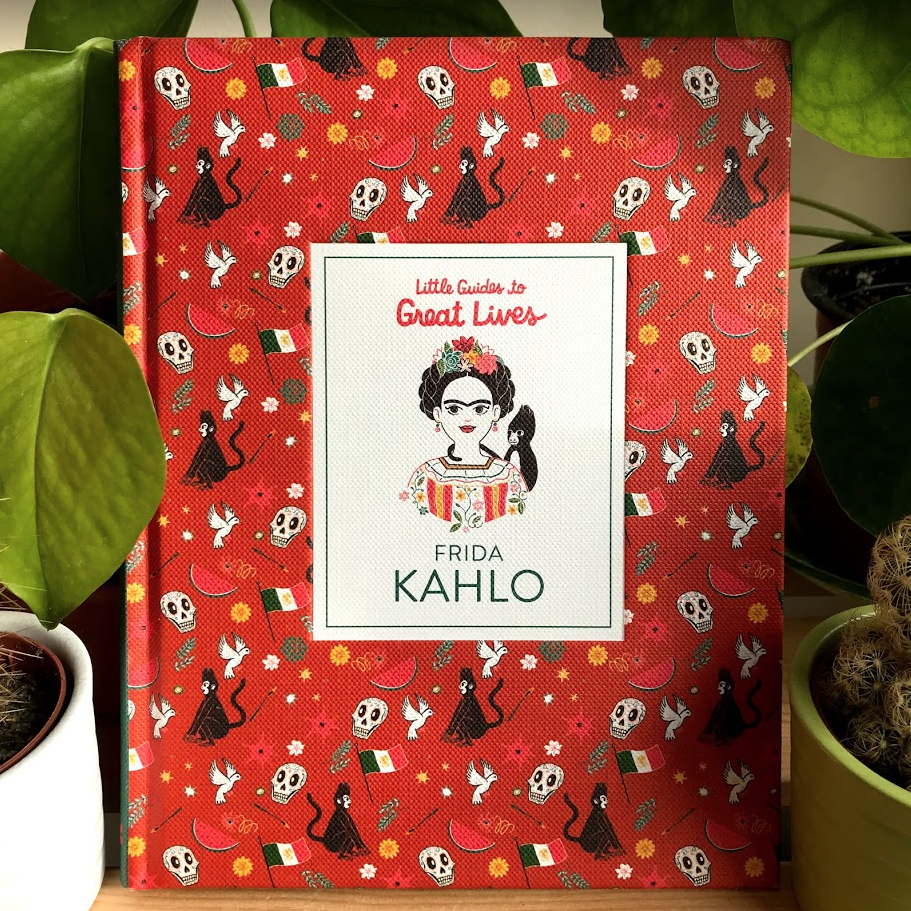
You balance being a freelance Illustrator with supporting other Illustrators part-time at the AOI. What interesting challenges and opportunities does this present?
Working at the AOI has presented me with the opportunity to become a better freelance Illustrator, in all senses. It’s motivating for me to be on the other side and see how members are getting all sorts of interesting commissions, or negotiating better terms for themselves based on our advice. Seeing them move forward inspires me to move forward too.
I am of course still learning, but every year I feel as though I am becoming more professional and getting to a better place with my practice. I owe a great deal of that to the AOI and my experience here.
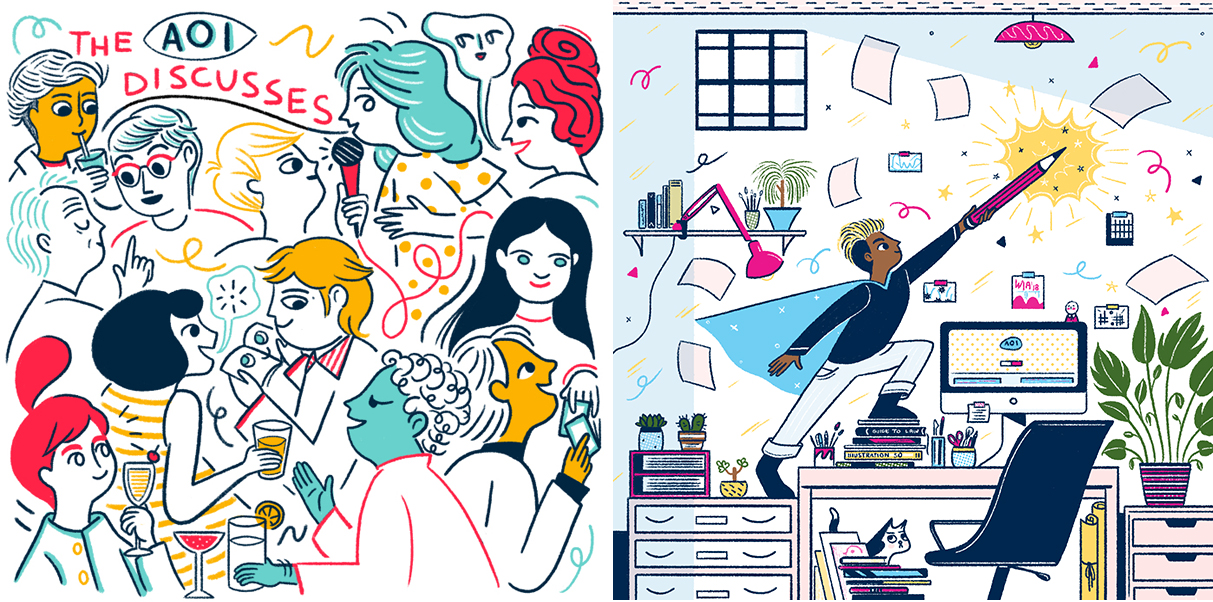
Commissioned work by Marianna for the AOI
Time is always the main challenge. Naturally there are times when different projects come in at once, and this can be tricky to balance with part-time employment – but I manage! I work best under pressure, and the structure the AOI provides me is essential.
How did you manage your time with Frida?
Time is of the essence in any project, but especially on a book. Thankfully my editors were very supportive, and we decided on a concise schedule from the very beginning; we divided the work in three parts, each to be delivered firstly in rough stage and then as finals. As roughs were approved, I could then start working them into final colour whilst finishing other roughs. This helped condense time, and to also keep stylistic consistency throughout.
Calendars became my best friend. Also my friend B. Mure gave me the best piece of advice and suggested to have a planner in front of me, where I could highlight how many pages were completed (from delivery of brief until the final coloured version). It was so helpful – I could visualise straight away how much I had done and how much was left to be finished. Also the occasional hand-written motivational note kept me focused.
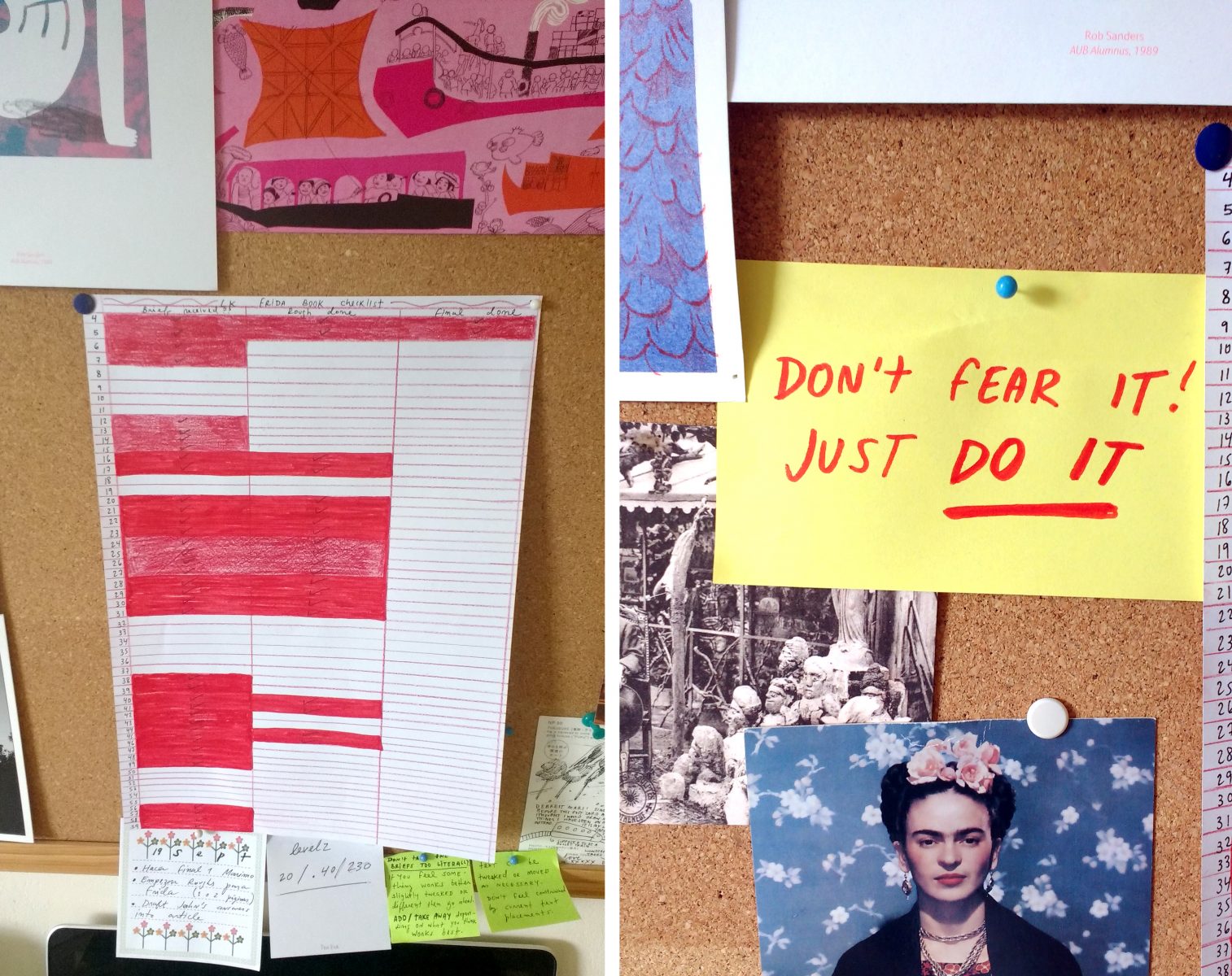
Talk us through the creative process. Did direction change? What have you learned?
I would say that the outcome went just as planned from the beginning. Before being confirmed for the project I had to supply a sample spread to show how Frida would look in my drawing style – ultimately this sample made it to the final book and informed the look of it all.
The design team at LK had a distinct idea of what they needed for each spread, with clear directions given in every brief; nevertheless, they also gave me freedom to suggest other alternatives during the rough process, which were all taken on board.
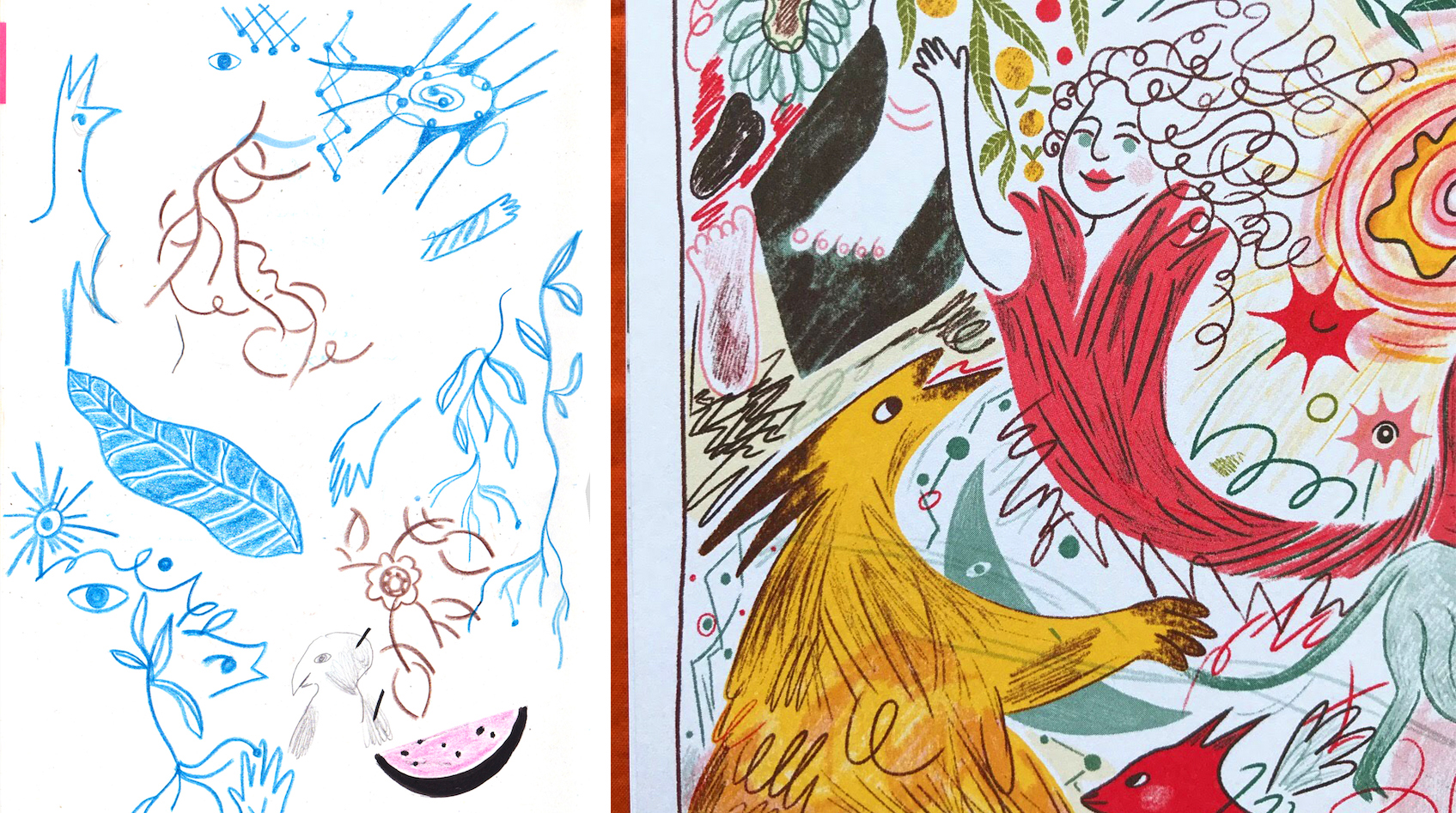
L: Preliminary drawings / R: Final illustration for inside of book
All books in the series are printed in three Pantone colours, so I had to think of the right palette and deliver all spreads colour-separated. This process forced me to constantly think about colour and composition, taking conscious decisions throughout.
I think the main thing I learned was to enjoy the process, no matter what. As tricky as some spreads were (or as panicky as I was at times!) I really loved working on this book – It encapsulates so many of my interests: Latin American motifs, strong characters, feminism, magical realism. It really was a dream project.
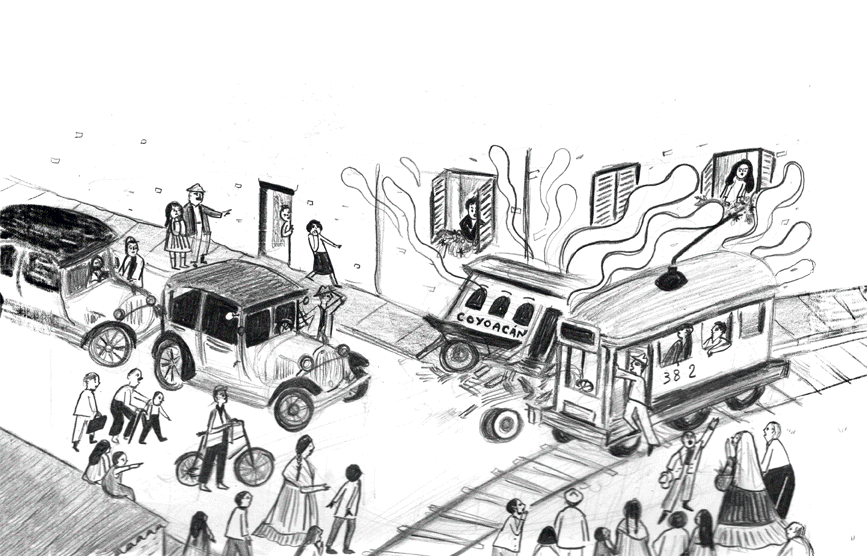
How does a publisher differ from other commissioners?
In publishing it’s somehow a bit more of a collaborative process – There’s a pressure for this one final outcome to look and feel absolutely right. Your work isn’t only being approved by your editor, but also by designers and the sales department and pretty much everyone involved in the production of the book. This can create more rounds of feedback, but it’s all absolutely crucial. It’s a great team effort.
In other commissions I only have the art director to convince. Each party (the AD and the Illustrator) is quite autonomous – the AD is free to commission, and the Illustrator (in a lot of cases) is free to work instinctively to the text. I love doing editorial work because of this aspect; the illustrations always need to be delivered quickly, so the results end up being very spontaneous and playful.

Crop from an illustrated spread for Anorak Magazine’s November issue, 2017
What have you learned about Frida throughout this project? What can we learn from her?
I’ve always perceived Frida to be a strong woman, not afraid to be different and fiercely independent; I never knew that her father was a great instigator of that. He motivated her to exercise as a child to overcome pain when she got polio, and he believed in his daughters having the same education received by boys at the time.
Isabel Thomas did an amazing job at researching and writing her story, taking a lot of inspiration from her personal diaries. She gets her character across so well and also highlights her vulnerability, which is so important for kids to see nowadays. I think the main thing that readers will take from the series is how every character is full of strengths as well as weaknesses, and how both are fundamental to shape great human beings.
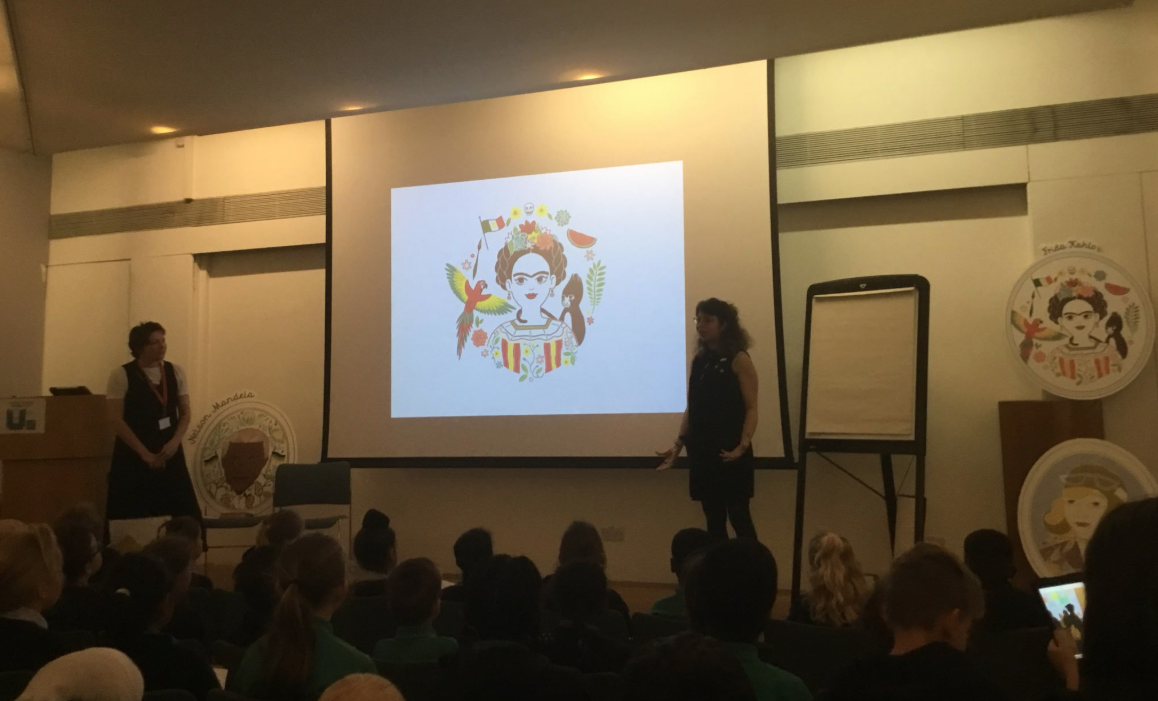
Isabel Thomas and Marianna speaking about Frida Kahlo and Little Guides to Great Lives at the London Schools’ Festival of Books, June 2018. Photo by Hollydale Primary School.
See more of Marianna’s work: Website / Blog / Instagram
You can also find out more about her drawing process and research for Frida in her blog.
Similar Industry Insights:
Back to News Page
